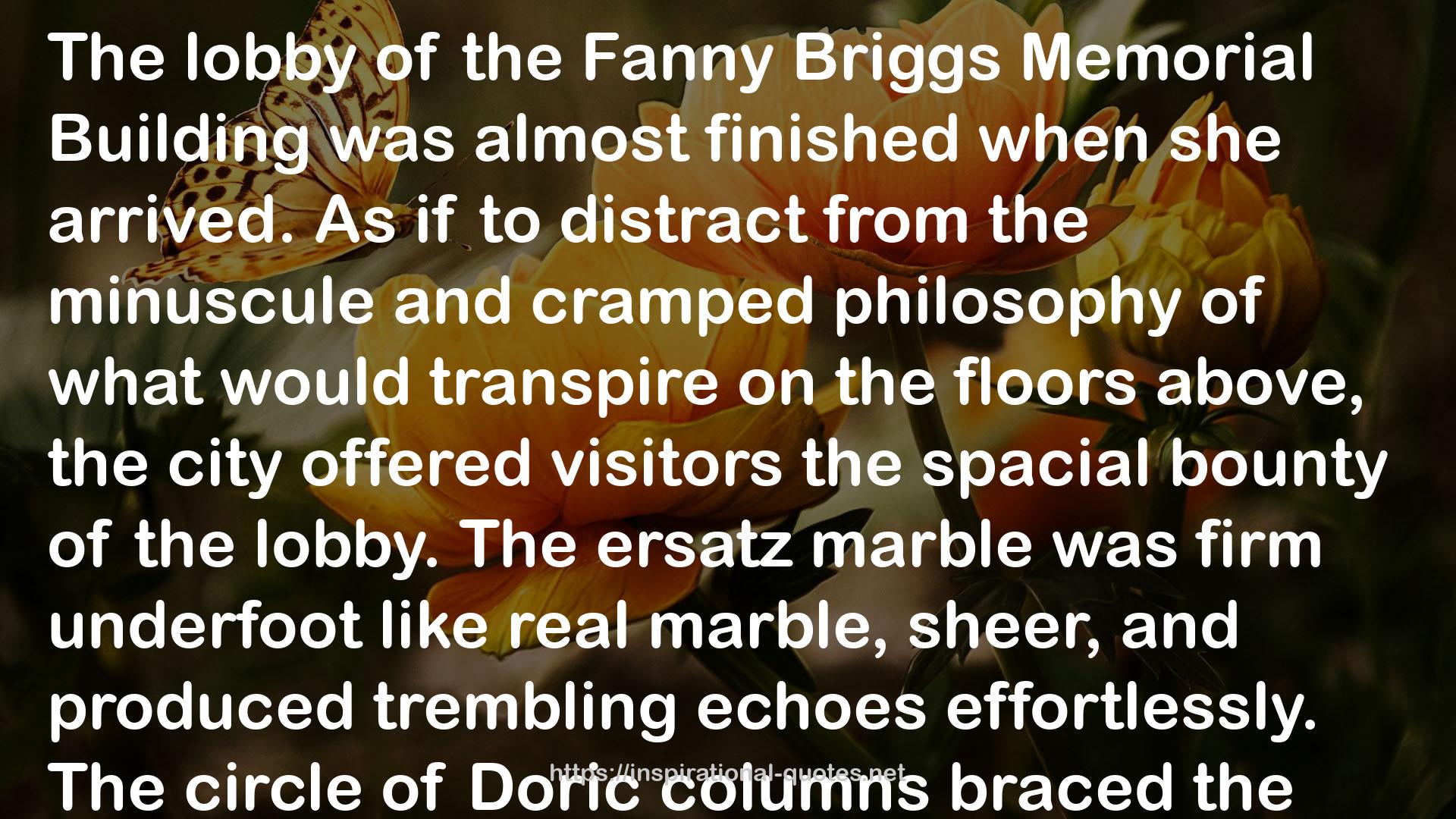" The lobby of the Fanny Briggs Memorial Building was almost finished when she arrived. As if to distract from the minuscule and cramped philosophy of what would transpire on the floors above, the city offered visitors the spacial bounty of the lobby. The ersatz marble was firm underfoot like real marble, sheer, and produced trembling echoes effortlessly. The circle of Doric columns braced the weight above without complaint. The mural, however, was not complete. It started out jauntily enough to Lila Mae’s left. Cheerless Indians holding up a deerskin in front of a fire. The original tenants, sure. A galleon negotiating the tricky channels around the island. Two beaming Indians trading beads to a gang of white men—the infamous sale of the Island. Big moment, have to include that, the first of many dubious transactions in the city’s history. (They didn’t have elevators yet. That’s why the scenes look so flat to Lila Mae: the city is dimensionless.) The mural jumped to the Revolution then, she noticed, skipped over a lot of stuff. The painter seemed to be making it up as he went along, like the men who shaped the city. The Revolution scene was a nice setpiece—the colonists pulling down the statue of King George III. They melted it down for ammunition, if she remembers correctly. It’s always nice when a good mob comes together. The painting ended there. (Someone knocks at the door of her room in 117 Second Avenue, but she doesn’t open her eyes.) Judging from the amount of wall space that remained to Lila Mae’s right, the mural would have to get even more brief in its chronicle of the city’s greatest hits. Either the painter had misjudged how much space he had or the intervening years weren’t that compelling to him. Just the broad strokes, please. "
― Colson Whitehead , The Intuitionist
